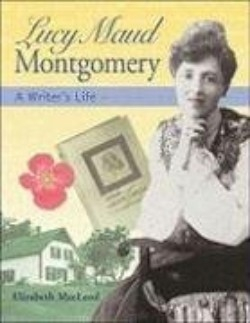Lucy Maud Montgomery
A Writer's Life
Searching through one of her old notebooks for short story ideas, Lucy Maud Montgomery found this scribbled note: “Elderly couple apply to orphan asylum for a boy. By mistake a girl is sent them.” From Huckleberry Finn to Harry Potter, children have been fascinated with stories about orphans. In 1905, when Maud (as she was known) received her fifth rejection slip for Anne of Green Gables, she sadly tucked the manuscript in a hatbox, where it sat for months. Finally accepted by an American publisher, Montgomery received her first copy of the book in 1908. Although overjoyed, she had no idea of the impact that book would have on her career. The story of the writing of Anne of Green Gables is just one part of this fascinating biography of Montgomery. One of Canada’s first successful writers, this smart and determined woman earned as much income in 1914 as Canada’s prime minister ($12,000), and received fan mail from Mark Twain himself!
In A Writer’s Life, MacLeod has repeated the style and format of her earlier biography, Alexander Graham Bell: An Inventive Life (Kids Can Press, 1999). The large-sized book has pages filled with collages of text, information boxes, photographs of family, friends, artifacts, and places. There is a caricature of Montgomery seen throughout, whose commentary on various photographs appears in voice balloons. Pastel-colored borders and backgrounds are overlaid with dotted arrows leading to points of interest. Though some adults find this type of presentation overly busy and distracting, children seem to have less trouble adapting to it. Perhaps they are more used to sound bite information culture. In fact, the idea of taking someone’s life story and breaking it up into small fascinating tidbits is becoming widely popular and seems to make sense, especially for younger readers. Van Der Rol does it in Anne Frank: Beyond the Diary (Viking, 1993) as does Kathleen Krull in Lives of the Presidents (Harcourt Brace, 1998). The various bits and pieces of Montgomery’s history are placed on the page like a Victorian scrapbook and serve to make this writer’s life quite accessible.
The story contains much hardship. Before she was two, Maud lost her mother to tuberculosis and was left with strict, formal grandparents on Prince Edward Island. Though she says she could not remember a time when she did not want to be a writer, her stories were often rejected, and she supported herself by writing melodramatic “pot boilers” much like Frances Hodgson Burnett of The Secret Garden fame. These stories kept food in the pot, but were not really artistically fulfilling. Even when Maud became rich and famous, she cared for her grandmother and was not free to travel or marry until 1911, after the older woman’s death. Fortunately, there is humor presented here as well. There is a photograph of Maud’s secondhand typewriter that didn’t print capital letters very well and wouldn’t make the letter “w” at all.
MacLeod offers readers a portrait of a woman who was an endearing product of her culture. The wife of a Presbyterian minister, mother of two sons, she was also a courageous pioneer, and a feminist who received high honors from the French and British governments. A lover of nature, as well as fine clothes, Montgomery was a tenacious writer whose stories have delighted and entertained millions of readers all over the world.
The book includes a time line, a bibliography, an index, and information about visiting various Montgomery sites in Canada and on the Internet.
Reviewed by
Leigh Forrest
Disclosure: This article is not an endorsement, but a review. The publisher of this book provided free copies of the book to have their book reviewed by a professional reviewer. No fee was paid by the publisher for this review. Foreword Reviews only recommends books that we love. Foreword Magazine, Inc. is disclosing this in accordance with the Federal Trade Commission’s 16 CFR, Part 255.

